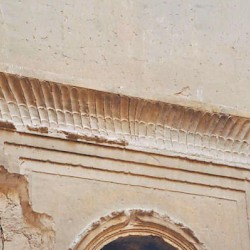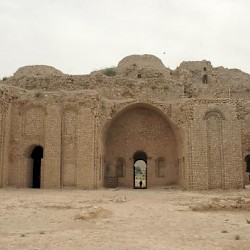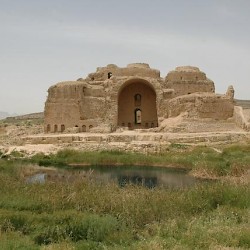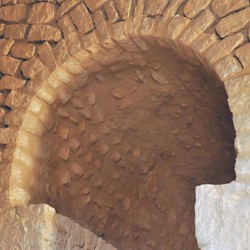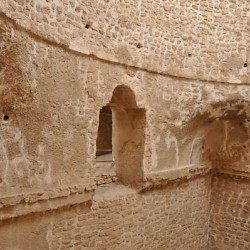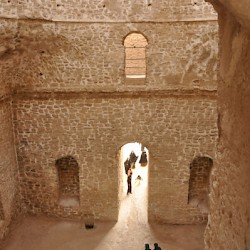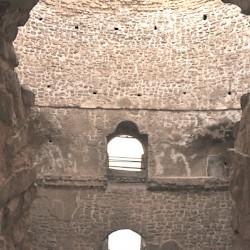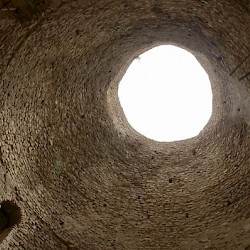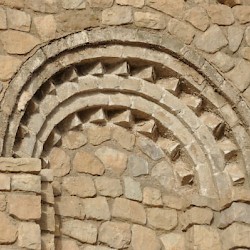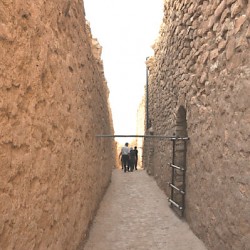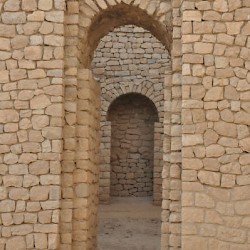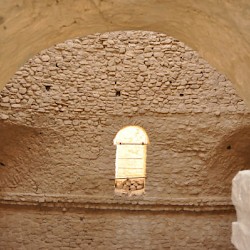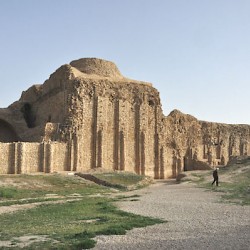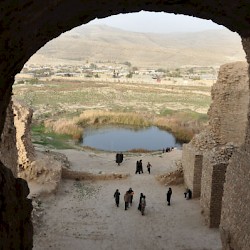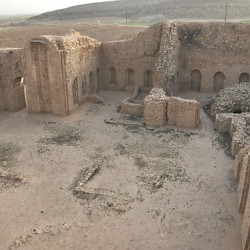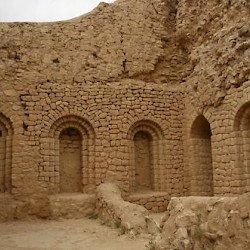Firuzabad, Palace of Ardašir
Ardašir Khureh ("fame of Ardašir): Sasanian city in Persis, modern Firuzabad. Except for the city, there is a castle, a palace (discussed on this page), a large relief celebrating Ardašir's victories, and a small relief commemorating his investiture.
Palace of Ardašir
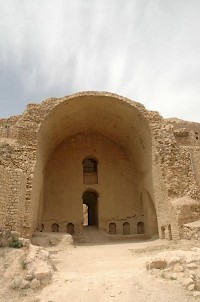
The palace of king Ardašir I, the founder of the Sasanian Empire, was built opposite the city he had founded, Ardašir Khureh ("fame of Ardašir"). Although one had to cross a river, it was easy to travel from here to the town or to the nearby castle, which is called Qalah-e Dokhtar.
The palace consisted of several parts. In the northeast was a great arch (an iwan) that opened to a garden with a pool (a doline). This façade may have looked like the Parthian palace at Ctesiphon. Behind the northeastern iwan, you will find two - originally three - large rooms with domes, followed by a large court in the southwest, which was surrounded by many residential rooms. The entire complex was more than hundred meters long (104, to be precise) and fifty-five meters wide. The walls were decorated with stucco, which were inspired by the architecture of Persepolis.
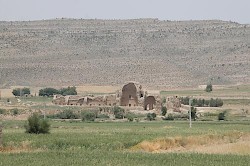
The supporting walls are sometimes more than four meters wide, which is understandable, because there were corridors and galleries on the first floor, which make it is possible to walk around the domes. These are the oldest examples of this type of architecture in Iran. It is possible - perhaps even likely - that they were inspired by western models, and that would not be without parallel, because the representation of Ahuramazda on the nearby Second Relief of Firuzabad is also inspired by western art.
However, unlike most Roman domes of this age, the domes at the Firuzabad palace were not made of concrete but of brick. From the point of view of the history of architecture, they are more advanced than, for example, the Pantheon in Rome.
